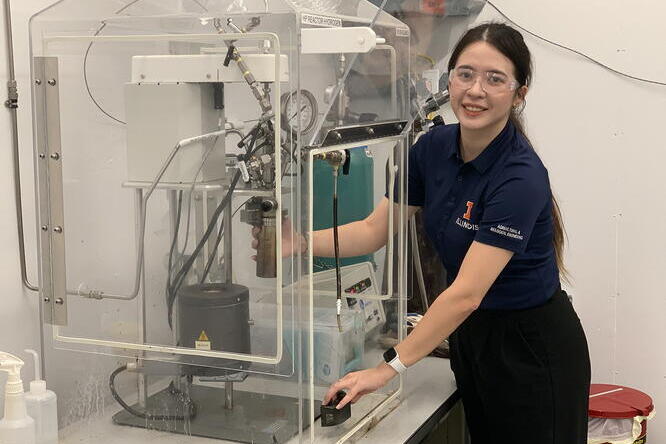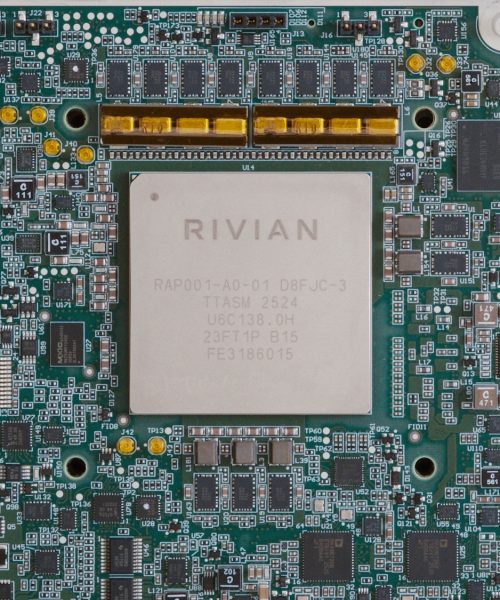One person’s trash is another person’s… jet fuel? Strange as it might sound, researchers at the University of Illinois Urbana–Champaign believe that they’ve figured out a process to make that unlikely scenario a reality–at least on a small scale.
Writing this week in Nature Communications, the agricultural engineers outlined a strategy for taking excess food waste, converting it into biofuel, and then “upgrading” that fuel into jet fuel that can go straight into a plane without requiring additional changes to the aircraft’s infrastructure. They compared their food-waste-derived fuel against industry benchmarks and found that it met all the necessary standards for conventional jet fuel.
Though these findings are still more of a proof of concept, they open up the exciting possibility of using food waste (which there’s certainly no shortage of) to help the aviation industry move closer to its ambitious goal of achieving net-zero carbon emissions within the next three decades.
“In a linear economy, we just produce something, use it, and throw it away. In this project, we take the waste and recover the energy and materials to make a usable product. This fills a missing link in the circular paradigm,” University of Illinois Urbana-Champaign professor and corresponding author Yuanhui Zhang said in a statement.
Planes lag behind cars in emission reductions
The United States Environmental Protection Agency (EPA) estimates that transportation accounted for roughly 29 percent of all greenhouse gas emissions in the United States in 2022 alone. Of that, about seven percent came from commercial aircraft. Modern cars have reduced emissions in recent years, in part thanks to the shift toward electric battery power. And while battery-powered airplanes are theoretically possible for some short flights, they simply don’t provide enough energy to power a passenger jet traveling across the country(jet fuel carries around 50 times more energy per kilogram than conventional lithium-ion batteries. As a result, jets have lagged behind cars in reducing emissions.
But what about so-called biomass-based sustainable aviation fuel (SAF)? Some estimates suggest that SAF, which largely refers to fuels derived from organic materials, could reduce emissions from flying by up to 80 percent, compared to conventional jet fuel. While ethanol and other biomass-based derivatives have been available for cars for decades, they have remained more elusive for airplanes because their chemical composition does not meet the much stricter requirements necessary for jet fuel.

Sabrina Summers of the University of Illinois demonstrates hydrotreating biocrude oil from food waste. Image: University of Illinois Urbana–Champaign.
Upgrading biomass to jet fuel
Meeting these requirements is where food waste comes in. In this new experiment, the team started by collecting food waste from nearby food-processing plants. They then used a chemical process called hydrothermal liquefaction (HTL), which essentially mimics the way the Earth naturally creates crude oil from organic matter over millions of years, except without all the waiting. HTL kind of acts like an advanced “pressure cooker” to fast-forward nature’s timeline.
With plenty of crude oil extracted from the food scraps, the researchers then set out to convert it into jet fuel through a two-part process. The first step involved removing salt, ash, moisture, and other impurities. After that, they used a cleaning process called catalytic hydrotreating to eliminate other undesirable elements such as nitrogen, sulfur, and oxygen. What remained were the specific hydrocarbons required to make jet fuel. They tested different catalysts and found that cobalt–molybdenum stood out as the most effective and commercially available metallic catalyst for driving the chemical reactions needed to refine the oil into aviation fuel.
The team took their food-waste derived aviation fuels and tested it against current fuel standards set by the American Society for Testing and Materials (ASTM) and the Federal Aviation Administration. It passed the screening test and met industry requirements without needing to introduce any special additives. That means, the fuel would theoretically power a commercial airplane.
Related: [All your burning questions about sustainable aviation fuel, answered]
The findings are a first step to show aviation fuel derived from food waste is at least possible. Actually making enough of it to supply an entire passenger jet, however, is another beast altogether. Scaling up at this level requires time, resources, and deep pocket books outside of academia.
“Our research helps solve the science and engineering problems, and then the industry can step in,” Zhang said.






